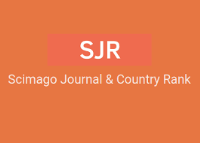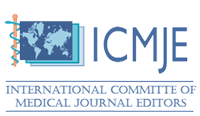A combination of bentonite, biological substrate, and microbial products to enhance coral sand and influence the growth performance of heat-resistant mustard greens, Brassica juncea
Аннотация
Background. Coral sand along the coast of Vietnam presents several challenges for plant growth, including inadequate nutrition, poor moisture retention, and high salinity, which complicate the cultivation of vegetables and trees.
Purpose. This study aims to address the challenge of enhancing coral sand by optimizing its physical and chemical properties, moisture retention, nutrient availability, and suitability for cultivation.
Materials and methods. The quality of mixed substrates is assessed using standard methods in accordance with Vietnamese Standards.
Collected data were analyzed using SPSS 22 statistical software (IBM, USA) and MS Excel 365 software (Windows, USA). Comparison of differences between experiments based on one-factor ANOVA analysis at 95% confidence level.
Results. Results indicate that with the improved soil formulation incorporating adhesive additives, organic substrates, salt-tolerant polysaccharide membrane-forming microorganisms, and salt-tolerant beneficial microorganisms at varying concentrations, porosity has increased to 54.90%, nearly matching that of alluvial soil at 56.14%. Consequently, the remediation formulas proved to be effective in enhancing soil characteristics. A growth index monitoring test conducted on the heat-resistant vegetable Brassica juncea after 35 days of cultivation demonstrated that the selected soil improvement formula yielded growth and productivity comparable to the control sample of alluvial soil, with the number of leaves reaching 7-8, an average leaf area of approximately 20 dm² per plant, a harvested vegetable yield of 20 g per plant, and a SPAD index of 23.87.
Conclusion. The effect of adding microbial preparations and bentonite to coral sand increases EC and post-harvest vegetable volume but is not significantly different from formulas without preparations and bentonite.
EDN: MVZWQP
Скачивания
Литература
Hai, N.Q., Hao, L.T.M., Hiep, N.V., Chi, V.T.Q., Loi, N.T., Tuan, L.A., Lua, T.T., Sy, D.V., & Viet, N.C. (2022). Physical, chemical, and biological characteristics of sandy soil in the Truong Sa Archipelago. Journal of Soil Science, Vietnam Soil Science Association, 68, 13-17.
Tu, T.D. (1998). An overview of the natural conditions and soil cover characteristics of select islands in the Truong Sa archipelago. In Collection of research works on the natural conditions and resources of the Truong Sa archipelago. Science & Technology Publishing House, Hanoi, pp. 271-276.
Tuan, T.A. (2014). Investigation of the landscape characteristics of coral islands in the Truong Sa archipelago. Journal of Marine Science and Technology, 34, 238-245.
Bach, N.V. (2000). Mechanism of coral reef formation in the Truong Sa Sea area. Geological Journal, 260, 9-10.
Garbowski, T., Bar-Michalczyk, D., Charazińska, S., Grabowska-Polanowska, B., Kowalczyk, A., & Lochyński, P. (2023). An overview of natural soil amendments in agriculture. Soil and Tillage Research, 225, 105462. https://doi.org/10.1016/j.still.2022.105462 EDN: https://elibrary.ru/uchgky
Golubeva, O.Y., Korytkova, E.N., & Gusarov, V.V. (2005). Hydrothermal synthesis of magnesium silicate montmorillonite for polymer-clay nanocomposites. Russian Journal of Applied Chemistry, 78, 26-32. https://doi.org/10.1007/s11167-005-0225-z EDN: https://elibrary.ru/liwswx
Department of Primary Industries and Regional Development, Western Australia. (2024). Claying to ameliorate soil water repellence. Natural resources factsheets.
Sitthaphanit, S., Bell, R.W., & Limpinuntana, V. (2010). Effect of clay amendments on nitrogen leaching and forms in a sandy soil. In Gilkes RJ, Prakongkep N (Eds.), Proceedings of the 19th World Congress of Soil Science: Soil Solutions for a Changing World.
Hassan, A.Z.A., & Mahmoud, A.W.M. (2013). The combined effect of bentonite and natural zeolite on sandy soil properties and productivity of some crops. Topclass Journal of Agricultural Research, 1(3), 22-28.
Zhou, L., Liu, J.H., Zhao, B.P., Xue, A., & Hao, G.C. (2016). Effects of soil amendment on soil characteristics and maize yield in Horqin Sandy Land. IOP Conference Series: Earth and Environmental Science, 41(1), 012005. IOP Publishing.
Karbout, N., Moussa, M., Gasmi, I., & Bousnina, H. (2015). Effect of clay amendment on physical and chemical characteristics of sandy soil in arid areas: the case of ground south-eastern Tunisian. Appl. Sci. Reports, 11, 43-48.
Czaban, J., Czyz, E., Siebielec, G., & Niedzwiecki, J. (2014). Long-lasting effects of bentonite on properties of a sandy soil deprived of the humus layer. International Agrophysics, 28(3).
Chau, N.H., Ha, N.V., Tua, T.V., Ha, D.Q., & Hao, C.T. (2020). Effects of bentonite on cation-exchange and moisture retaining capacities in the sandy soil of Ninh Thuan province for asparagus cultivation. Journal of Analytical Chemistry, Physics and Biology, 25(1), 81-85.
Kumar, V., Thakur, A.K., Barothia, N.D., & Chatterjee, S.S. (2011). Therapeutic potentials of Brassica juncea: an overview. CellMed, 1(1), 2-1.
Siddiqui, M.H., Mohammad, F., & Khan, M.N. (2009). Morphological and physio-biochemical characterization of Brassica juncea L. Czern. & Coss. genotypes under salt stress. Journal of Plant Interactions, 4(1), 67-80. https://doi.org/10.1080/17429140802227992 EDN: https://elibrary.ru/ozvxjr
Goel, P., Singh, A.K., & Trivedi, P.K. (2015). Abiotic stresses downregulate key genes involved in nitrogen uptake and assimilation in Brassica juncea L. PLOS ONE, 10(11), e0143645.
Saha, B., Mishra, S., Awasthi, J.P., Sahoo, L., & Panda, S.K. (2016). Enhanced drought and salinity tolerance in transgenic mustard [Brassica juncea (L.) Czern & Coss.] overexpressing Arabidopsis group 4 late embryogenesis abundant gene (AtLEA4-1). Environmental and Experimental Botany, 128, 99-111.
Singh, I., Kumar, R., Kaur, S., Singh, H., & Kaur, R. (2019). Combining ability studies using diallel mating design in Indian mustard [Brassica juncea (L.) Czern & Coss.]. Indian Journal of Agricultural Research, 53, 366-369.
Jat, R.S., & Choudhary, M. (2019). Nitrogen utilization efficiency variability in genotypes of Indian mustard (Brassica juncea) under contrasting N supply. Journal of Plant Nutrition, 42(19), 2435-2446.
Phuong, L.N., Son, D.H., Giang, N.D.C., & Dong, N.M. (2018). Salinity tolerance potential and ability to improve salinity alluvial soil chemistry of broccoli (Brassica juncea L.). Vietnam Journal of Agricultural Science and Technology, 88(3), 72-79.
Просмотров аннотации: 315
Copyright (c) 2025 Cong Tinh Nguyen, Duy Nhan Vu, Ngoc Tan Bui, Thi Thu Trang Dinh, Thi Hue Le, Minh Tien Vu

Это произведение доступно по лицензии Creative Commons «Attribution-NonCommercial-NoDerivatives» («Атрибуция — Некоммерческое использование — Без производных произведений») 4.0 Всемирная.

























































